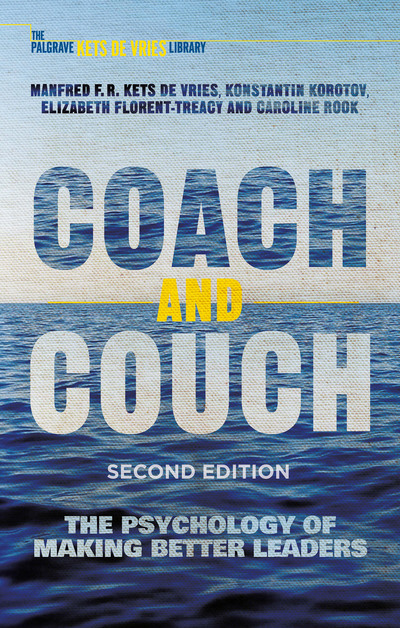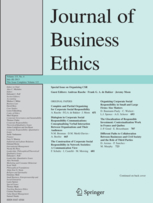Academic articles
Practitioner articles
Working papers
Books
Book chapters
Case studies
Other publications
Subject(s)
Ethics and social responsibility
Volume
6
Journal Pages
483–485
Subject(s)
Human resources management/organizational behavior
Keyword(s)
Executive coaching, leadership development, executive education, psychology of leadership, clinical paradigm, talent management, HR management, executive coaching
Professor Manfred Kets de Vries and his colleagues have helped thousands of executives to increase their effectiveness in dealing with colleagues and clients, and to refocus their own professional and personal aspirations.
This book is a volume of essays on leadership development topics written by academics, coaches, and change consultants.
It explores how extraordinary leaders and thriving organizations are created by sharing research methodologies and insights, and by describing intervention and change techniques. Drawing upon substantial research, this book presents the essential leadership models and equips practitioners with tools for developing executive coaches and working with business leaders. This second edition includes new chapters on executive stress and coaching across the gender divide.
Volume
2nd ed.,
Pages
302
ISBN
978-1137561596
Subject(s)
Marketing; Strategy and general management
Keyword(s)
Customer satisfaction, organizational downsizing, layoffs, firm performance, organizational slack, panel data analysis
JEL Code(s)
M310
Organizational downsizing to cut costs frequently creates new, “hidden costs” that neutralize potential increases in productivity. Customer dissatisfaction is such an overlooked downsizing outcome. Using longitudinal data from the American Customer Satisfaction Index (ACSI), Compustat, and a consumer survey this study analyzes satisfaction outcomes of downsizing. It extends research in this domain to B2C markets and explicitly addresses environmental influences on the downsizing–satisfaction link. Results indicate that there is a negative effect of downsizing on customer satisfaction. It is particularly pronounced for companies (1) with little organizational slack, (2) with high labor productivity, or (3) in industries with high R&D intensity. Moreover, downsizing has a stronger negative impact on customer satisfaction in product categories with (4) high risk importance and (5) low probability for consumer errors as well as (6) low level of brand consciousness. Furthermore, customer satisfaction mediates the effect of downsizing on financial performance. The results provide an explanation for why so many downsizing projects fail and what managers can do to prevent adverse effects of downsizing on customer satisfaction and financial performance.
© Academy of Marketing Science 2014. With permission of Springer
Volume
43
Journal Pages
768–789
Subject(s)
Human resources management/organizational behavior
Secondary Title
Epinets: The epistemic structure and dynamics of social networks
Journal Pages
NP54–NP56
Subject(s)
Economics, politics and business environment; Ethics and social responsibility
Pages
79
Subject(s)
Human resources management/organizational behavior; Marketing
Keyword(s)
Corporate social responsibility, job product, employee job performance, cluster analysis, internal marketing, ideological job needs, developmental job needs, employee satisfaction, employee turnover intention
This paper examines how employees react to their organizations’ corporate social responsibility (CSR) initiatives. Drawing upon research in internal marketing and psychological contract theories, we argue that employees have multi-faceted job needs (i.e., economic, developmental, and ideological needs) and that CSR programs comprise an important means to fulfill developmental and ideological job needs. Based on cluster analysis, we identify three heterogeneous employee segments, Idealists, Enthusiasts, and Indifferents, who vary in their multi-faceted job needs and, consequently, their demand for organizational CSR. We further find that an organization’s CSR programs generate favorable employee-related outcomes, such as job satisfaction and reduction in turnover intention, by fulfilling employees’ ideological and developmental job needs. Finally, we find that CSR proximity strengthens the positive impact of CSR on employee-related outcomes. This research reveals significant employee heterogeneity in their demand for organizational CSR and sheds new light on the underlying mechanisms linking CSR to employee-related outcomes
© Springer Science+Business Media Dordrecht 2014. With permission of Springer
Volume
131
Journal Pages
319–335
Subject(s)
Economics, politics and business environment
Keyword(s)
Innovation, research, collaboration, performance, electricity, energy
Using a production function approach based on Cobb–Douglas, this analysis relates R&D efforts of 32 electric utilities on both sides of the Atlantic to their performance in terms of labour productivity. We find that higher R&D levels generally have a positive impact on revenues. However, only in the sub-sample of 16 electricity suppliers in Europe this effect is significant. Knowledge spill-over effects can be estimated for the US American sub-sample, since US utilities have bundled their R&D efforts in a centralized research institution and have to report that data. Our analysis reveals, though, that collaborative research efforts do not lead to positive spill-overs at the assumption of a time delay of one year.
Copyright © 2015 Elsevier Ltd. All rights reserved
Volume
86
Journal Pages
351–359
Subject(s)
Economics, politics and business environment
Keyword(s)
European competition policy, abuse of dominance, efficiency defense
JEL Code(s)
K21, L21, L40
Volume
11
Journal Pages
671–700
Subject(s)
Ethics and social responsibility
Keyword(s)
Business ethics, leadership, responsibilities of corporate leadership, social responsibility, organizational ethics, core purpose, change management, service management, privatization, corporate social responsibility, organizational purpose
Ulrich Homburg must have had an unpleasant déjà-vu on January 28, 2010, when hearing of headlines in Germany’s leading tabloid, Bild, about “Schaffnerin Herzlos,” the “heartless train conductor.” The board member of Germany’s national railway company, Deutsche Bahn AG (DB), and head of its passenger transportation division, was confronted with media reports about a minor who had been thrown off the train the night before by a DB train conductor. The incident happened on what turned out to be the coldest night of the winter, in one of the most deserted provincial train stations in the German state of Brandenburg. The girl was traveling without a valid train ticket. This incident was not the first of its kind. In the fall of 2008, Bahn employees had also forced several children and youths off of trains. The train company had subsequently given service personnel very clear instructions: Under no circumstances should minors be asked to leave the train. Now Homburg had to ask himself if further action was necessary.
We have successfully used this case with various different audiences ranging from MBA students to executive education. Given its rather untechnical and general perspective it can be used in a broad range of class contexts. However, the level of reflection and discussion will obviously vary according to the participant group and/or the position within a program. The case can be used to discuss topics such as: Responsible leadership and business ethics, corporate social responsibility, change management, and strategy and service management
| buy now | buy now | buy now |
Subject(s)
Finance, accounting and corporate governance



